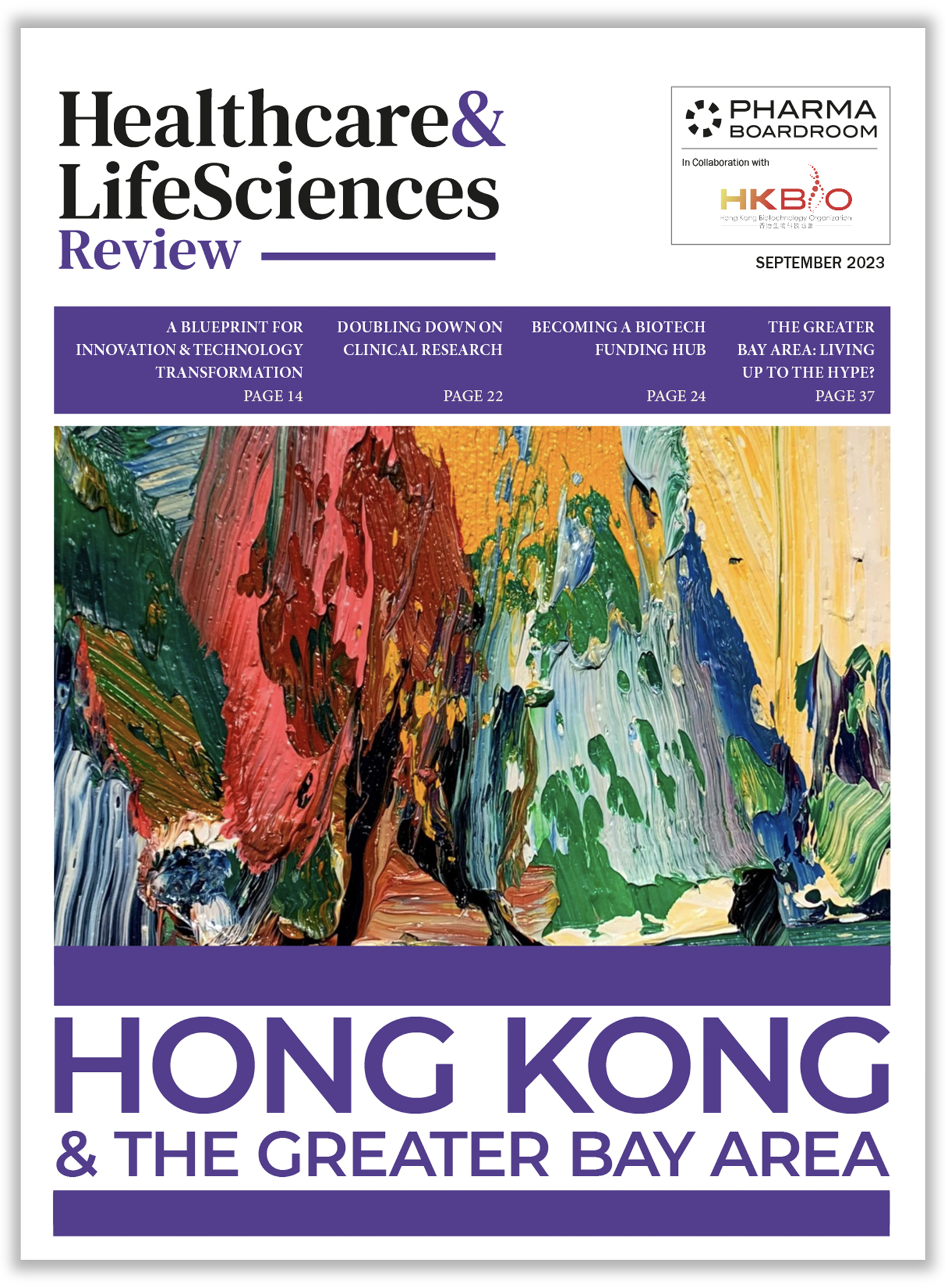Thilo Stadler speaks passionately about Grünenthal’s collaborative partnerships, company goals, and workforce engagement; revealing himself to be someone who truly believes in
Grünenthal’s business.
You currently hold the position of Regional General Manager South Europe and the Nordics and Managing Director of the Italian subsidiary. What were the main objectives set when you started with the company in Italy and what have been the key milestones since?
As a company we have clear strategic objectives based on the overarching value of delivering true benefits to the patients by being entrepreneurial specialists. This is especially true for Europe where we aim to maximize our pipeline and existing market portfolio and strengthen our position in pain and focused indications for our target audience.
In 2009 in Italy our portfolio consisted of about 60% local business and 40% global products for pain. Over the past few years we completely flipped this situation so that today 70% of our business is in pain. This was made possible by the fact that we achieved reimbursement for several products and could subsequently launch them, so that in the meantime we have a complete portfolio in Italy in the segment of moderate to severe pain. We have all kinds of formulations that are needed on an individual basis such as patches and oral medication for acute and chronic pain and a nasal spray for breakthrough pain.
It is especially worth mentioning the launch of Palexia (Tapentadol) in 2011, a new chemical entity from the Grünenthal pipeline and therefore, after three decades, the first real new solution for patients with chronic and severe pain. Shortly after this followed the launch of Versatis, a patch which delivers benefits to the patients suffering from localized neuropathic pain.
Today we are ranked number one in Italy in the segment of moderate to severe pain and see a future with a double digit growth rate. In addition, I may say, that along with offering innovative products we are recognized by patient associations and scientific associations as a long lasting reliable partner fighting against pain. At the end of 2015, Italian doctors offered around 60 million patient treatments with our products to patients suffering from pain.
[Featured_in]
I would like to underline that all Southern European countries, Italy, Spain, France and Portugal, are essential drivers of our success story.
Grünenthal made EUR 1.154 billion in revenue in 2014; how have the results of 2015 been in comparison; both in Italy and globally?
The company also developed positively in 2015 and made EUR 1.212 billion.
Europe stands for close to 60% net revenues within total company with a double digit growth rate of 16 percent between 2014 and 2015.
Italy is a key performer in, and contributor to, our European business. Some key data: in 2015 Grünenthal Italy superseded EUR 100 million net sales for the first time. By the end of 2015, Grünenthal Italy’s total portfolio showed an evolution index of 113 vs the entire Italian pharma market. This shows that we are continuing our positive development; a trend that stands in reverse to entire market development over the last five years. This is also the cornerstone for our profit contribution to the European business. After reshaping our portfolio on a European level and carrying out the necessary reorganization, our contribution has risen year by year. Today Italy stands for one fifth of our total European profit.
For 2016 we are looking forward to enhanced development based on further growth of our current portfolio and due to the fact that, since the beginning of the year, Grünenthal Italy has become part of our European cooperation with MSD. This means that we now have the opportunity to further promote two lead brands in their segments in full synergy with our pain portfolio.
Please tell us more about your partnership with MSD and the importance of partnerships in the Italian market as a whole.
As mentioned previously, our focus is on strengthening our position in pain and focused indications covered by our target audience; therefore we are also interested in successful partnering models. For this reason, we are acquiring Arcoxia and Fosavance to further market development. Both brands and substances are complement our portfolio well and, based on their leading role in the market, are an excellent fit with our overarching objective; delivering true benefits to patients. With our leading position in our key markets, we have already proven to be a reliable partner.
Some of Grünenthal‘s product portfolio received reimbursement in 2011; can you explain your stakeholder relationships?
The starting point is our goal as a company to meet unmet medical needs and offer real benefits to patients. This means that we need to come up with innovations and justify why reimbursement for our products is useful to health care providers. We are confident in our clinical and market access data which shows a positive ratio between patient benefits and overall costs for the national health care system.
Given that you have approached AIFA with a new product, what can we expect from Grünenthal’s pipeline in the near future?
Our next product is Zalviso, which is indicated for the management of post-operative pain and we believe is going to change acute pain management in hospital after surgery. Zalviso can offer an easy to set up and use solution to the current shortfalls in post-operative pain treatment. As it is an application device combined with an efficacious substance, it is convenient for patients to use themselves and enables a safe and efficient route of administration. Moreover, recently published health care assessments show a more favorable outcome with Zalviso versus current overall treatment costs in post-operative pain.
In 2016 we will launch Zalviso in France and Germany, with a reimbursed launch planned for Italy in 2017.
The production site in Italy is 50,000 square meters and one of the most up-to-date pharmaceutical plants in the country. Can you please provide a brief overview of its capabilities and some of the most recent investments in it?
Grünenthal’s approach is to have most of our products manufactured internally. We believe this is the best way to guarantee the highest standard in quality and service level. For these targets the industrial sites are kept at “state of the art” level with continuous investment in infrastructure and organization. The Italian site near Milan is one of the most relevant for Grünenthal; it is focused on oral solid and liquid forms with an annual output of two billion doses. The site employs 200 people and exports 95% of the production to international markets. Currently one of the most important growth factors of the site is the worldwide production of Palexia (Tapentadol).
[related_story]
In terms of R&D, it has become a common trend for large pharmaceutical corporations to invest 10 to 15% of their turnovers in R&D, whereas SMEs, such as Grünenthal invest 20% or more. Has this effort in the Italian market paid off? What is your assessment of the level of Italy’s research and scientific community?
You are correct; in order to maintain our infrastructure and invest in new projects our R&D spending has been around 20% of net revenues. Future sustainable investment is also being planned at this proportion of net revenues. Today about 600 employees work across all the aspects of R&D that are required to take a compound from an idea to a medicine. Grünenthal is focusing on pain, inflammation, perioperative care, and specific niche indications with high medical need. In terms of costs, our aim and motivation is a meaningful contribution to healthcare. Coming back to the relationship with the stakeholders, we strongly belief the markets will reward those who make a real difference. Concerning our scientific development, Italy is fully engaged in all programs.
What are your priorities for the future of the Italian market, particularly in relation to the Vision 2020 goals that you have set?
We are on track with the objectives we set years ago and were mentioned above. However, especially in Italy, there is further need to improve the management of pain treatment. This has been also substantially underlined by the introduction of law 38 which states in a simplified summary, that every Italian has the right to proper pain treatment. As well as delivering real innovative solutions through our products, we also see it also as our duty to work closely with scientific and patient associations in order to further improve treatment in this segment.
As we are currently primarily offering solutions in the retail segment, our goal with Zalviso is also to enter into the hospital pain segment as a strategic partner and further strengthen our position in pain and related indications.
In terms of focused indications covered by our target audience, as one example Grünenthal recently signed a licensing agreement with AstraZeneca for the exclusive rights to Zurampic (Lesinurad) in the European Union and Latin America. Zurampic, in combination with a xanthine oxidase inhibitor, is for the treatment of hyperuricemia associated with uncontrolled gout. The agreement adds to our portfolio of innovative therapies in the areas of inflammation, chronic pain, and rare diseases.
What makes Grünenthal such a great place to work?
In essence, it is conveyed in our mindset and our objective to deliver the best care for our patients. Our employees go the extra mile, convinced that we deliver quality. In the last few years we have participated in the “Great place to work” survey and in 2015 we were ranked 11th among all midsized companies in all industries in Italy. The next step is to become one of the Top 10 best ranked employers in Italy!







